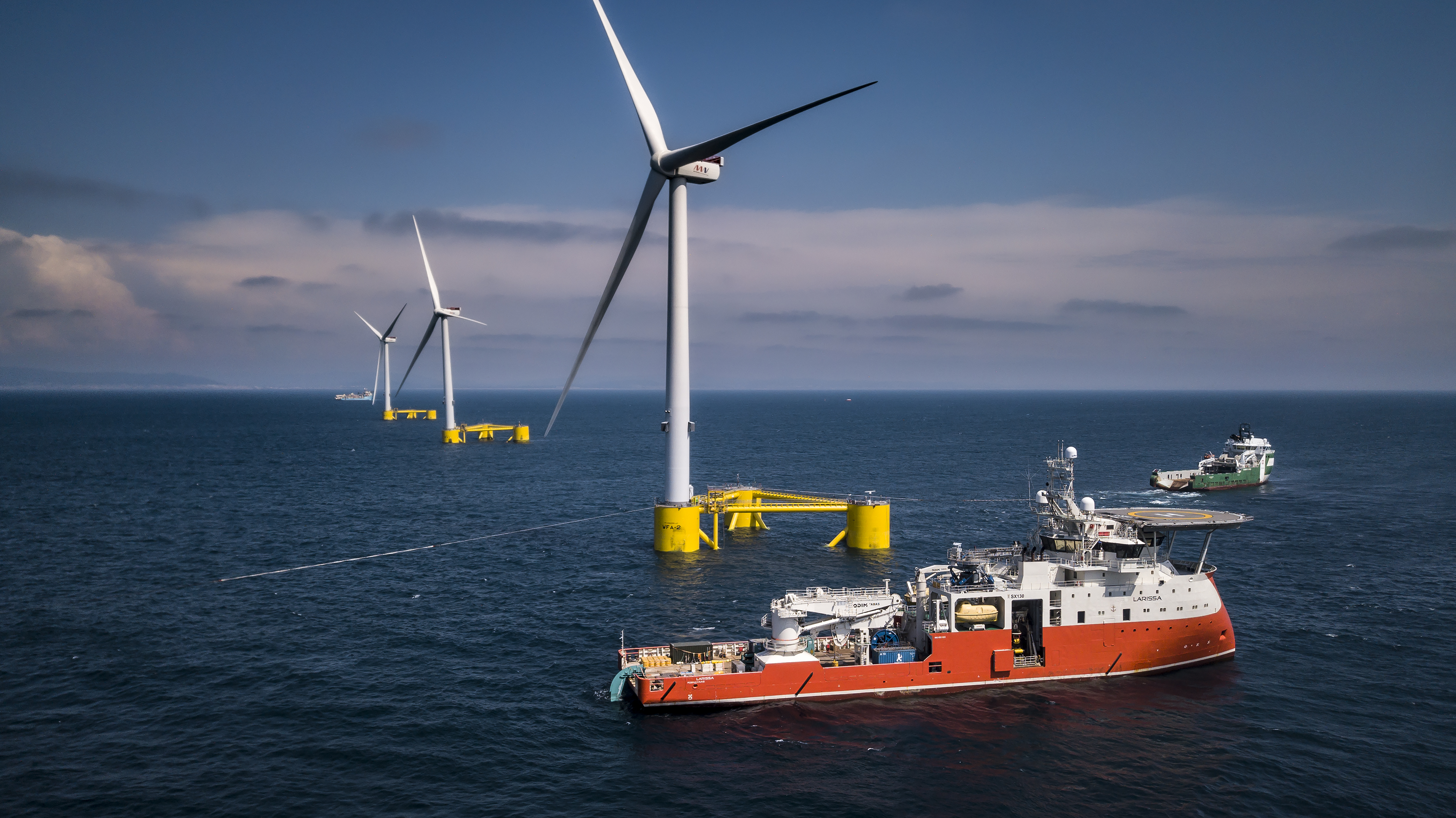News
DTBird System Proves Effective in Reducing Eagle and Raptors' Collision Risk at Wind Farms: Key Findings from the REWI Technical Report
Published in: Wind, Press Releases
DTBird systems were evaluated by the Renewable Energy Wildlife Institute (REWI) in two windfarms: Manzana (California) and Goodnoe Hills (Washington) to measure the detection and deterrence effectiveness in large raptors, especially Golden and Bald Eagles. The REWI technical report, funded by the U.S. Department of Energy and supported by multiple stakeholders in the renewable energy industry, offers a comprehensive evaluation of these DTBird models detection and deterrence system. This evaluation is crucial for environmental regulators to establish requirements in the wind farm environmental permissions to comply with environmental regulations such as the Bald and Golden Eagle Protection Act and the Migratory Bird Treaty Act.
Study Setup:
- Manzana: DTBird V4D4 model (2016) installed on 7 wind turbine generators (WTGs) with 65m tower height and 82.5m rotor diameter. 9 months pilot study.
- Goodnoe Hills: DTBird V4D8 model (2019) installed on 14 WTGs with 87m tower height and 110m rotor diameter. 2-year study.
Key Findings:
After three years of data collection, we have summarized the main results:
- Significant Reduction in Eagles and Raptors' Collision Risk
DTBirdV4D4 and DTBirdV4D8 (models 2019 and 2021, respectively) reduced the likelihood of golden eagles and other large raptors entering the rotor-swept zone (RSZ) by 20-30%, with an even higher deterrence rate (over 40%) for eagles approaching or flying directly toward the RSZ.
- Detection Efficacy Across Multiple Sites
To measure the detection efficacy, eagle-like unmanned aerial vehicle (UAV) flights were carried out. After analyzing the data, they obtained the following results:
- The overall probability of detecting large raptors was 65% within 240 meters from cameras.
- The highest detection rate was ~75 % (at 50 - 75 m); at 240m the detection probability was ~50%; and at 380m, it was ~30%.
- The likelihood of missing a detectable flight was generally less than 20% when the minimum line of sight distance to the camera was approximately 30 to 120 meters. This probability increased to less than 30% at distances below 20 meters and between 120 and 160 meters. However, it exceeded 50% at distances greater than 200 meters.
- Deterrence Efficacy Across Multiple Sites
The main results were:
- For large raptors, 73% of the cases at the Manzana site and 63% at Goodnoe Hills were classified as either confirmed or potentially effective responses.
- Examining specific species or groups, the response rates were: for golden eagles, 79% at the Manzana site compared to 60% at Goodnoe Hills; for turkey vultures, 81% at Manzana versus 61% at Goodnoe Hills; and for buteos, 72% at Manzana compared to 56% at Goodnoe Hills.
Other results include:
- The rate of False Positive (FPs) triggering deterrence in Manzana was 1.2 - 1.8 FP/turbine/day and 0.8 minutes/turbine/day. In Goodnoe Hills, it was 0.8 FP/turbine/day and 0.96 minutes/turbine/day, after fine-tuning (starting at 3.9 FP/turbine/day).
- The rate of deterrence triggered by Non-targeting Avian False Positive (NTAFP) was 40% in Manzana and 36% in Goodnoe Hills.
- Researchers were afraid that eagles could become less responsive to deterrent signals, but this negative habituation did not occur. In fact, eagles spent less time near turbines when deterrence signal was activated frequently, even by FPs.
- Behavioral responses to deterrence signals
In Goodnoe, they could compare the effect of deterrence in avoidance behavior between DTBird systems with sound muted versus systems with sound activated. The main results were:
- Deterrence reduced 24 - 27% the dwell time that eagles spent in the vicinity of the wind turbines (WTGs) in comparison with muted systems, with an average dwell time reduced in approximately 25 to 19 s per event. In the case of golden eagles, deterrence can reduce the dwell time by 29%, with an average dwell time reduction of 26 to 17 s per event.
Other results include:
- Birds responded better to deterrence signals in Manzana than in Goodnoe, possibly due to differences in resident/migratory birds, landscape and climate conditions. However, the eagle's response to deterrence signal was higher in Goodnoe Hills than in Manzana.
- Eagles and vultures tended to response better to deterrence signals as wind speed increased, but the opposite occurs with buteos.
- The probability of effective deterrence with wind above approximately 4 m/s was higher for eagles and vultures than for buteos and increased as the wind speed increased. For buteos the probability decreased as the wind speed increased.
- For all raptors, the rate of effective deterrence was the highest in flights categorized as moderate risk, possibly because birds had enough time to maneuver effectively.
Opportunities for Further Innovation
While the REWI report underscores DTBird's success, it also highlights opportunities for further refinement. For instance, improving camera resolution and further optimizing the AI algorithms used to detect birds against complex backdrops (such as clouds and moving turbine blades) could enhance the system's detection accuracy. In addition, AI can reduce the rate of FP and NTAFPs. Additionally, the report recommends regular camera lens maintenance to avoid solar degradation, which can impact detection capabilities.
We thank the project partners for their contributions and commitment to evaluating the DTBird system: H.T. Harvey & Associates, PacifiCorp, Puget Sound Energy, Inc. (PSE), Portland General Electric Company (PGE), EDF Renewables North America, Avangrid & Vestas American Wind Technology.
DTBird in 2024
DTBird is committed to implementing all improvement recommendations and is developing a new software, Larus. This software utilizes AI, including tracking and neural networks, to enhance detectability by approximately 20-30% per camera. It initiates a continuous process of improving detection, reducing false positives, and targeting specific species groups.
Additionally, new hardware models have been introduced, featuring 4 to 12 4K cameras. These models increase vertical surveillance from 77º to 90º and extend the maximum detection distance from an average of around 190 meters to between 500 and over 1,000 meters, depending on the model and configuration.
All DTBird modules can operate within the same WTG, providing detection and collision control to reduce bird collision risks. The Collision Avoidance module decreases collision risk and enhances the efficiency of the Stop Control module.
The new DTBird hardware and software are designed to be scalable, allowing for easy expansion. For more information on our latest DTBird models and recommended uses based on target species and WTG dimensions, please view our Catalogue!
For more information, please contact:
Milagros Bonacchi - Head of Marketing & Communications
mbonacchi@dtbird.com
(+34) 637 40 73 42


.gif)











-Nov-07-2025-10-03-51-4417-AM.jpg)

